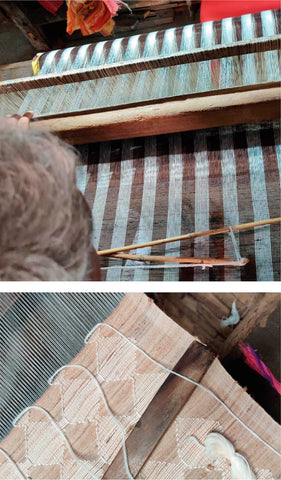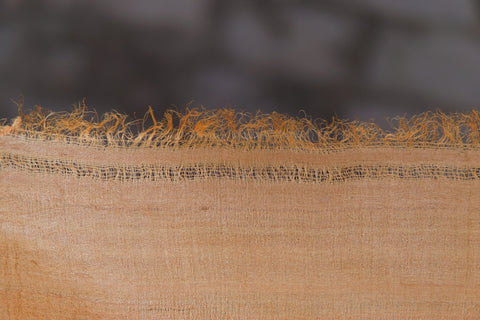
Weaves
Bihar's weaving traditions have roots that stretch deep into history, with evidence of textile production dating back to the ancient Mauryan Empire (322-185 BCE). The fertile Gangetic plains provided abundant cotton and silk, laying the foundation for a thriving textile industry.
Weaving involves interlacing two sets of threads, the warp (vertical) and the weft (horizontal), results in a wide range of textures and designs.
At Bihart, we honor this rich heritage, our handwoven textiles are crafted on traditional pit looms, where skilled artisans manually interlace warp and weft threads to create unique fabrics.
Bihart's handwoven products are prized for their craftsmanship. Each piece not only embodies centuries of weaving expertise but also represents a living connection to Bihar's cultural legacy, making them truly special in today's textile world.
Extra weft
Extra weft weave is a traditional textile embellishment technique involving the insertion of additional weft threads to create intricate patterns. This 600-year-old practice has roots in various cultures, notably the Kutch weaving from Gujarat, India. The technique uses a secondary weft thread inserted at intervals to form decorative motifs on a simple ground fabric. In Bihar, the 'Baawan buti' saree exemplifies this art, featuring 52 motifs - one for each week of the year. These motifs, traditionally based on local customs and beliefs, commonly include kalash, bull, and lotus designs. Historically, these sarees were made with cotton yarn in red, blue, and yellow. Bihart has innovatively added mulberry silk to the weaving process, creating fresh 'Baawan buti' sarees with geometric and floral patterns while maintaining the original tradition of 52 motifs. By continuing to practice and evolve this exquisite art, Bihart's artisans ensure the survival and modernization of this rich textile heritage, passing down skills through generations and introducing Bihar's unique textiles to a wider audience.
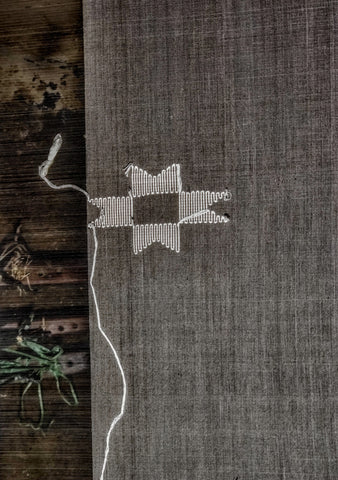
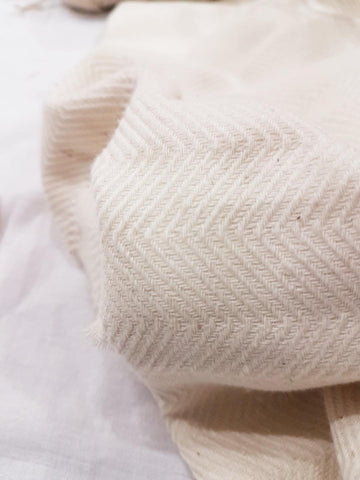
Twill
Twill weaving is one of the oldest and most fundamental textile techniques, with origins dating back to ancient civilizations. Twill's history spans thousands of years, with evidence found in textiles from ancient Egypt, China, and Europe. Its distinctive diagonal pattern is created by passing the weft thread over one or more warp threads, then under two or more warp threads, advancing this offset with each row. This structure results in the characteristic diagonal lines on the fabric's surface.
Its popularity stems from its durability, drape, and ability to hide stains. Twill variations include herringbone, houndstooth, and denim.
Specifications of twill weaves are often denoted by ratios (e.g., 2/1, 3/1), indicating the number of warp threads the weft passes over and under.
We at Bihart are not just committed to preserving this ancient weaving technique but it’s also about ensuring that art continues to thrive while adapting to contemporary fashion trends. Our weavers create this weave with handspun cotton to create the softest yet a very sturdy twill weave which is rarely available.
Fishnet
The fishnet weave, a traditional handweaving technique from Bihar, has its roots in the region's rich textile heritage. As the name suggests, weavers mimic the structure of a fishing net, using twisted cotton yarn to create a soft, mesh-like fabric. The technique is unique, as Bihar's weavers craft fishnet using only two shafts, unlike other weaving clusters that use multiple shafts for gauge fabric. This results in an ultra-light, breathable material that's both functional and aesthetically pleasing. At Bihart, we're dedicated to promoting and preserving this traditional art form. Despite having very few takers, we're constantly experimenting with new clothing designs. We're exploring innovative applications and working closely with Bihart Threads Masters, providing them opportunities to showcase their skills and earn a sustainable income
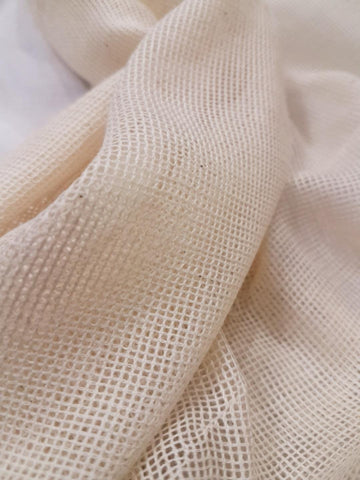
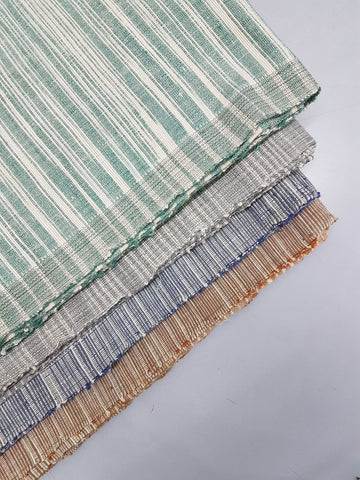
Chingari
The Jharna and Chingari weaves, originating from Bihar's rich handloom traditions, showcase the ingenuity of local artisans. Jharna weave, named after waterfalls, involves space-dyeing either warp or weft threads, creating a fluid, cascading effect.
Chingari weave, meaning spark, takes this further by space-dyeing both warp and weft, resulting in a fabric with spark-like color points. Both weaves begin with setting up the warp and then doing the 'bharni' (filling) with the weft. The space-dyeing process is crucial in achieving the desired visual effect.
At Bihart, we're actively promoting and revitalizing these traditional weaves. We've introduced Jharna and Chingari fabrics in contemporary contexts, creating shirt fabrics that have received an enthusiastic market response. This success has encouraged us to expand our production, incorporating these weaves into a wider range of products including shirts, dresses, and kurtas.
By adapting these traditional techniques our efforts are focused on providing sustainable livelihoods for skilled weavers while introducing these unique Bihar textiles to a broader audience.
Kisan charkha
The Kisan Charkha cotton weave is made with handspun cotton yarn which is uneven and irregular in thickness. Hence the weave too has an uneven stripe-like tone giving it a unique texture. It is usually a thick fabric. it is a symbol of self-reliance and simplicity, has its origins in the All-India Spinners’ Association established in Patna, Bihar, in 19251. This technique became emblematic of India’s freedom struggle, with Mahatma Gandhi promoting the Charkha as a tool for economic independence and resistance against colonial rule. The Kisan Charkha involves hand-spinning cotton yarn on a traditional spinning wheel, producing textiles that are eco-friendly and embody the elegance of rural Indian life.
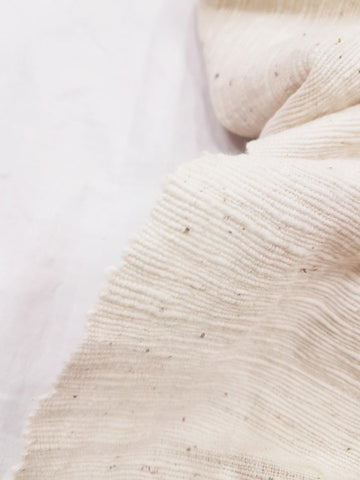
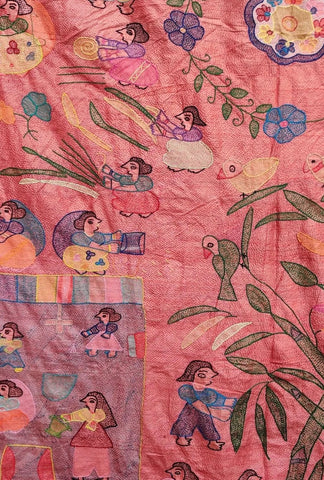
Sujani
Sujani, a traditional embroidery craft from Bihar, India, has its roots in the Muzaffarpur region. The origin of Sujani can be traced back several centuries, evolving from a practical need to create warm, layered quilts from old saris and fabrics.
Historically, Sujani held deep cultural significance, particularly among Rajput women. Legend has it that married women would create one bed cover annually, using Sujani embroidery to depict their life experiences. These intricately stitched covers served as a form of communication between mothers and daughters, especially during Diwali, narrating joys, sorrows, and daily life events through motifs.
The specifications of Sujani are distinctive:
It uses a simple running stitch technique. The craft employs multiple layers of fabric, usually old saris, creating a quilt-like structure. Designs are first drawn on the fabric, then embroidered using colorful threads. Themes have evolved to include contemporary issues like women's rights, literacy, and health awareness.
At Bihart, we're committed to preserving and promoting this rich craft while adapting it to contemporary tastes. We've expanded Sujani's application beyond traditional quilts and bed covers to include fashionable items like kurtis, sarees, and dresses.
Applique
You must know it as Applique, but we call it "Khatwa. This is a traditional textile art form that originates from Bihar, India, involving two techniques: conventional applique and reverse applique. This ancient art uses colorful fabric patches to create intricate designs on a base material. Historically, it adorned ceremonial garments and decorative items. Khatwa features vibrant floral patterns, geometric shapes, and animal motifs, meticulously hand-stitched by skilled artisans. Bihart redefines Khatwa by blending its rich heritage with contemporary design elements. Modern motifs, delicate florals, and geometric patterns transform everyday clothing into artistic canvases. By incorporating these designs, Bihart ensures the craft’s tradition thrives while captivating modern fashion sensibilities.
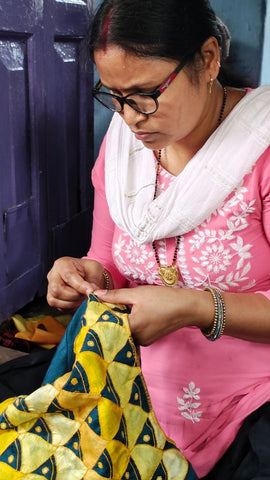

Madhubani
Madhubani art, originating from the Mithila region of Bihar, India, is a traditional folk art known for its vibrant colors and intricate patterns. This art form dates back to ancient times and is deeply rooted in Hindu mythology and local rituals. Madhubani paintings were traditionally done on walls and floors of homes with natural dyes and pigments, and have now expanded to paper and canvas.
Characterized by eye-catching geometric designs, depictions of flora and fauna, and scenes from religious texts, Madhubani art is a cultural emblem of Bihar, reflecting the region’s rich artistic heritage in every stroke.
At Bihart, we proudly carry forward this heritage by featuring hand-painted Madhubani sarees. Our artisans meticulously apply these traditional techniques, bringing the timeless beauty of Madhubani art to life in each saree.
Sikki
Sikki craft, an ancient art from Bihar’s Mithila region, involves weaving golden-yellow sikki grass into exquisite items. Historically, it was a skill passed down through generations, primarily by women during their leisure. This eco-friendly craft produces baskets, dolls, and intricate decorative pieces, reflecting the artisans’ dexterity and creativity. The process includes dyeing the grass, splitting it into slender strands, and then meticulously coiling and weaving these strands around a base material. At Bihart, we celebrate Sikki craft by integrating its unique, handcrafted elements into contemporary designs, offering a blend of tradition and modernity.

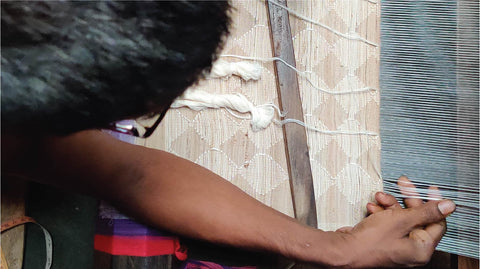
Wild Silk
When you choose Bihart’s wild silk, you’re not just getting a garment; you're acquiring a piece of Bihar's heritage—a fabric that embodies the raw elegance of nature.
Imagine a fabric that whispers tales of untamed beauty. At Bihart, we bring you wild silk, a rare gem woven from the heart of nature. Unlike the more common mulberry silk, which is cultivated in controlled environments, wild silk takes a truly remarkable journey. In Bihar, the Tassar moth lays its eggs on the branches of Asan and Arjun trees, resulting in cocoons that are smaller and tougher than mulberry silk cocoons. These cocoons are collected and processed with a delicate sun-drying technique, which yields a smaller amount of usable silk. However, the result is worth the wait. Wild silk has a captivating slub texture, reflecting its wild origins. Its colour palette features natural hues, from warm cream to cool, ethereal tones, with a soft, understated luster that contrasts with the high sheen of mulberry silk. Despite its seemingly delicate nature, wild silk is incredibly strong, reflecting the resilience of the Tassar moth and the skill of Bihart’s handloom weavers. Each piece is handwoven, ensuring it becomes a unique masterpiece. Imagine a fabric that whispers tales of untamed beauty. At Bihart, we bring you wild silk, a rare gem woven from the heart of nature. Unlike the more common mulberry silk, which is cultivated in controlled environments, wild silk takes a truly remarkable journey. In Bihar, the Tassar moth lays its eggs on the branches of Asan and Arjun trees, resulting in cocoons that are smaller and tougher than mulberry silk cocoons. These cocoons are collected and processed with a delicate sun-drying technique, which yields a smaller amount of usable silk. However, the result is worth the wait. Wild silk has a captivating slub texture, reflecting its wild origins. Its colour palette features natural hues, from warm cream to cool, ethereal tones, with a soft, understated luster that contrasts with the high sheen of mulberry silk. Despite its seemingly delicate nature, wild silk is incredibly strong, reflecting the resilience of the Tassar moth and the skill of Bihart’s handloom weavers. Each piece is handwoven, ensuring it becomes a unique masterpiece.
